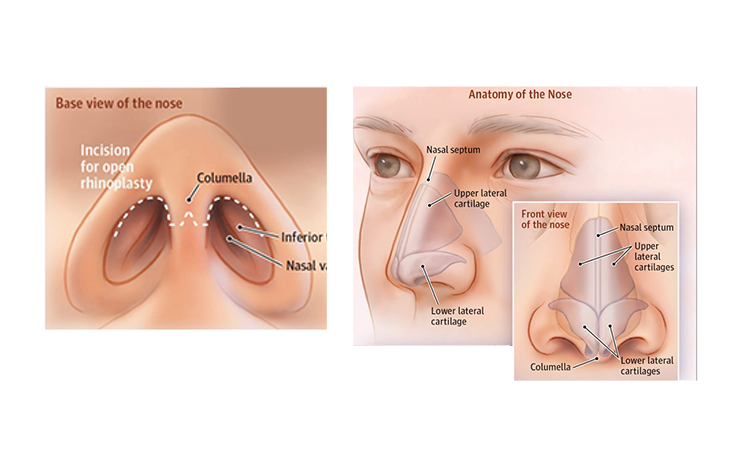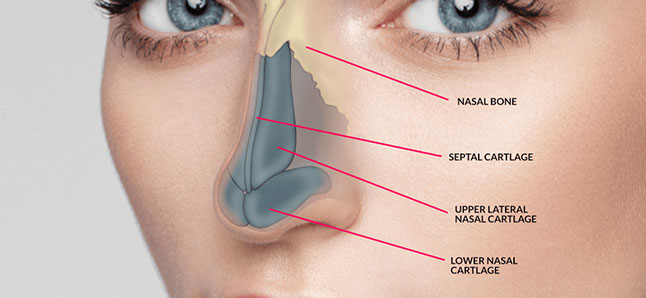Rhinoplasty
Rhinoplasty, commonly referred to as a “nose job,” is surgery to change the shape of your nose by modifying the bone or cartilage. Rhinoplasty is one of the most common types of plastic surgery. ENT surgeons are also minded by the nasal function to properly breathe through your nose. Improving the shape and function of the nose is termed functional rhinoplasty.

Rhinoplasty Procedure
Rhinoplasty is usually done in a hospital. Your doctor will probably use general anesthesia. If it’s a simple procedure, with general anesthesia, you’ll inhale a drug or get one through an IV that will make you unconscious.
Once you’re numb or unconscious, your surgeon will make cuts between or inside your nostrils.
They’ll separate your skin from your cartilage or bone and then start the reshaping. If your new nose needs a small amount of additional cartilage, your doctor may remove some from your ear or deep inside your nose. If more is needed, you might get an implant or a bone graft.
The procedure usually takes between one and three hours. If the surgery is complex, it can take longer.
If the septum is deviated it is straightened as a part of the operation to straighten the nose, obtain grafts and improve nasal breathing. In this cases the procedure is called septorhinolasty.
Recovery from Rhinoplasty
1. After surgery, your doctor may place a plastic or metal splint on your nose. The splint will help your nose retain its new shape while it heals. They may also place nasal packs or splints inside your nostrils to stabilize your septum, which is the part of your nose between your nostrils.
2. You’ll be monitored in a recovery room for at least a few hours after surgery. If everything is okay, you’ll leave later that day. You’ll need someone to drive you home because the anesthesia will still affect you. If it’s a complicated procedure, you might have to stay in the hospital for a day or two.
3. To reduce bleeding and swelling, you’ll want to rest with your head elevated above your chest. If your nose is swollen or packed with cotton, you might feel congested. People are usually required to leave splints and dressings in place for up to 2 weeks after surgery. You might have absorbable stitches, meaning they’ll dissolve and won’t require removal. If the stitches aren’t absorbable, you’ll need to see your doctor again a week after surgery to get the stitches taken out.
4. Memory lapses, impaired judgment, and slow reaction time are common effects of the medications used for surgery. If possible, have a friend or relative stay with you the first night.
5. For a few days after your surgery, you might experience drainage and bleeding. A drip pad, which is a piece of gauze taped below your nose, can absorb blood and mucus. Your doctor will tell you how often to change your drip pad.
6. You might get headaches, your face will feel puffy, and your doctor might prescribe pain medication.

Your doctor may tell you to avoid the following for a few weeks after your surgery:
- running and other strenuous physical activities
- swimming
- blowing your nose
- excessive chewing
- laughing, smiling, or other facial expressions that require lots of movement
- pulling clothing over your head
- resting eyeglasses on your nose
- vigorous tooth brushing
Be especially careful about sun exposure. Too much could permanently discolor the skin around your nose.
You should be able to return to work or school in a week.
Rhinoplasty can affect the area around your eyes, and you might have temporary numbness, swelling, or discoloration around your eyelids for a few weeks. In rare cases, this can last for six months, and slight swelling could persist even longer. You can apply cold compresses or ice packs to decrease discoloration and swelling.
Follow-up care is important after rhinoplasty. Be sure to keep your appointments and follow your doctor’s instructions.







